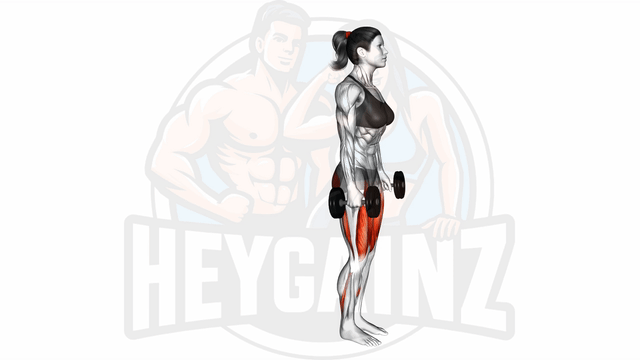
Instructions:
- 1Hold a dumbbell in each hand and stand upright
- 2Step backwards with your right foot, bending both knees to lower your body
- 3Push back up to the start position using your front foot
- 4Repeat with the left leg
- 5Alternate legs until the set is complete
Tips:
- Keep your front knee over your foot and not extended past your toes
- Keep your back straight, avoid leaning forward
- Focus on using glutes and quadriceps during the movement
- Perform the exercise slowly for better muscle contractions
Dumbbell Rear Lunge: A Comprehensive Guide
The dumbbell rear lunge is a highly effective lower body exercise that primarily targets the gluteus maximus and quadriceps. This movement not only helps in building strength but also improves balance and stability, making it a fantastic addition to any workout routine. Whether you are looking to tone your thighs or enhance your athletic performance, the dumbbell rear lunge delivers impressive results.
To perform the dumbbell rear lunge, begin by standing with your feet hip-width apart, holding a dumbbell in each hand. Step back with one foot while lowering your hips until both knees are bent at approximately a 90-degree angle. Ensure that your front knee remains aligned with your ankle and does not extend past your toes. Push through the front heel to return to the starting position, then alternate legs. This exercise can also be referred to as the dumbbell reverse lunge or simply dumbbell back lunges.
Benefits of the Dumbbell Rear Lunge
- Strengthens the lower body muscles, focusing on the glutes and thighs.
- Enhances balance and core stability.
- Encourages proper body mechanics, promoting better movement patterns.
- Can be adjusted in intensity by varying the weight of the dumbbells.
Tips for Maximizing Your Workout
When incorporating the dumbbell rear lunge into your fitness regimen, consider the following tips:
- Form is key: Maintain an upright posture with your chest lifted and shoulders back throughout the movement.
- Control your movements: Focus on smooth and controlled motions to avoid injury and maximize muscle engagement.
- Warm up: Always perform a warm-up before your workout to prepare your muscles and joints for exercise.
- Progress gradually: Start with lighter weights and increase as you gain strength and confidence in the movement.
For those looking for dumbbell rear lunge alternatives, the dumbbell reverse lunge offers similar benefits and can be performed in various ways, such as from a step. Incorporating both variations into your routine can help target the muscles worked more effectively and keep your workouts fresh.
Incorporate the dumbbell rear lunge into your fitness protocol to build strong thighs and glutes while enhancing your overall stability and strength.